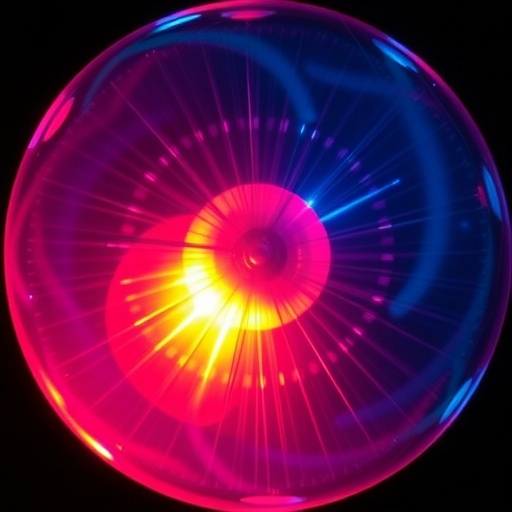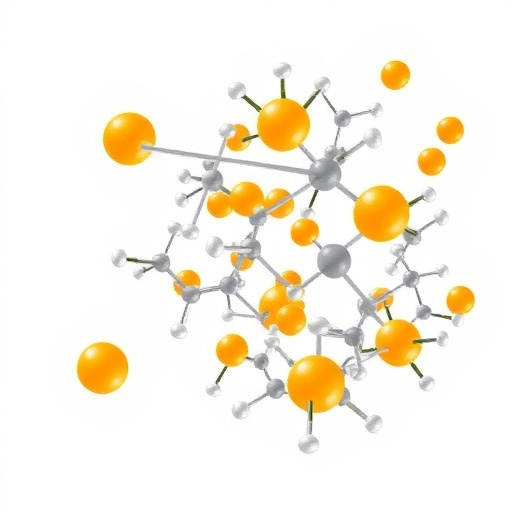In a groundbreaking advancement at the intersection of ultrafast spectroscopy and X-ray science, researchers have unveiled a novel technique that sharply enhances resolution beyond the fundamental limitations of current X-ray free-electron laser (XFEL) sources. This cutting-edge development exploits the stochastic nature of self-amplified spontaneous emission (SASE) in XFEL pulses to achieve super-resolution stimulated X-ray Raman spectroscopy (s-SXRS), potentially revolutionizing molecular and materials characterization on unprecedented temporal and spectral scales.
At the heart of this innovation lies a detailed analysis of the SASE pulse structure, which is inherently composed of numerous random temporal spikes varying in intensity and energy. By scrutinizing single-shot spectra collected over thousands of pulses, the researchers mapped out the statistical distribution of these spikes, revealing that each pulse contains between 18 to 30 energy spikes, typically clustering around 23. These spikes collectively span an energy bandwidth of roughly 7.5 eV and correspond to ultrashort pulse durations near 40 femtoseconds, providing a rich framework for spectral localization techniques that bypass classical resolution barriers.
Modeling these pulses required an inventive application of the partial coherence method, whereby each individual SASE pulse is synthesized from a Gaussian-averaged spectral envelope with phases randomly distributed between –π and π. This approach reproduces the characteristic temporal coherent spikes with bandwidth-limited widths near 0.25 femtoseconds. A Gaussian temporal window further shapes these pulses, ensuring faithful emulation of the experimentally measured 40-femtosecond pulse durations. The resulting simulated spectra, when convolved with instrumental response functions, astonishingly replicate the empirical fluctuations and spectral spike distributions observed in the XFEL measurements, establishing a robust platform for downstream analysis.
.adsslot_E9rKjwnRZp{ width:728px !important; height:90px !important; }
@media (max-width:1199px) { .adsslot_E9rKjwnRZp{ width:468px !important; height:60px !important; } }
@media (max-width:767px) { .adsslot_E9rKjwnRZp{ width:320px !important; height:50px !important; } }
ADVERTISEMENT
Accurately quantifying the stimulated X-ray Raman scattering (XRS) and X-ray lasing (XRL) emission yields proved pivotal to verifying methodological claims. To this end, the researchers meticulously calibrated the detection system downstream of a neon gas cell by varying gas attenuator settings and employing filter wheels of varying thicknesses. The calibration incorporated linear regression between integrated spectral intensity and pulse energies measured by an upstream gas monitor detector. Complementing this experimental approach, calculations based on the geometry and transmission efficiencies of optical elements—including the Kirkpatrick–Baez mirror focusing system, aluminum filters, slit apertures, and diffraction gratings—verified photon count estimates on the order of 5 × 10^10, bolstering confidence in the measured emission intensities.
Integral to the resolution improvements achieved was a thorough characterization of the spectrometer’s instrumental broadening. By analyzing the precise absorption features of the neon 1s → 3p resonance under controlled low-density conditions, the team isolated the Gaussian contribution to spectral width—attributed to the spectrometer’s resolution—as approximately 0.18 eV, superimposed on the natural Lorentzian lifetime broadening of the excited neon state. This instrumental limit traditionally constrains spectroscopic precision, making it imperative to deploy strategies that transcend this barrier.
The essence of the super-resolution capability emerges from localizing spectral peaks with precision surpassing the conventional diffraction limit imposed by spectrometer resolution and the inherent SASE spike bandwidth. Drawing inspiration from super-resolution microscopy, the localization uncertainty scales inversely with the square root of the number of photons per spike. Here, with roughly 20,000 detected photons distributed over 30 spectral spikes, the photon count per spike is estimated near 600. Taking into account the pixel-size limitation of 0.055 eV, the combined localization uncertainty settles around 0.056 eV, effectively setting the achievable resolution.
In turn, this localization uncertainty propagates through the stimulated X-ray Raman spectroscopy processing pipeline, culminating in a net spectral resolution of approximately 0.079 eV. Such a resolution surpasses the erstwhile barrier posed by the 0.1 eV linewidth inherent to individual SASE spikes. This remarkable compression of spectral linewidth is verified experimentally by fitting Gaussian profiles to background-free spectral regions within neon gas, where observed linewidths consistently hover near 0.08 eV. These findings emphatically confirm that detector pixel size and localization algorithms, rather than intrinsic source or spectrometer limitations, serve as the critical bottlenecks for ultimate spectral resolution.
Beyond validating the technique’s resolution claims, this study sets a precedent for leveraging stochastic properties of XFEL pulses—long regarded as a limiting nuisance—to extract enhanced molecular fingerprints. The random intensity spike fluctuations provide the variability requisite for covariance analyses, enabling disentanglement of subtle spectral features masked under conventional averaging methodologies. As such, this super-resolution s-SXRS technique facilitates unprecedentedly detailed views of ultrafast electronic and vibrational dynamics with potential applications across chemistry, biology, and materials science.
Moreover, this approach surmounts longstanding challenges associated with XFEL temporal coherence and pulse fluctuations, transforming what was once an obstacle into a resource. By combining sophisticated computational modeling, rigorous experimental calibration, and advanced data processing inspired by super-resolution imaging, the work elegantly bridges the gap between ultrafast spectroscopy and precision measurement, charting a course toward transformative capabilities in X-ray science instrumentation.
Looking ahead, the implications of this advancement are profound. Access to sub-0.1 eV spectral resolution, paired with femtosecond temporal gating, positions researchers to probe electron correlation effects, chemical reaction pathways, and transient states with remarkable clarity. The methodology could be adapted to a wide range of elemental systems and excitation schemes, opening avenues for studying complex molecular assemblies and energy transfer mechanisms on their natural timescales and energy scales.
In conclusion, the innovative utilization of SASE pulse statistics combined with meticulous detector calibration and peak localization ushers in a new era of super-resolution stimulated X-ray Raman spectroscopy. This milestone underscores the power of fusing experimental precision, theoretical insight, and computational ingenuity to overcome the fundamental limits of light–matter interaction probing, heralding exciting frontiers in ultrafast X-ray spectroscopy research.
Subject of Research: Super-resolution stimulated X-ray Raman spectroscopy (s-SXRS) using statistical properties of SASE X-ray free-electron laser pulses.
Article Title: Super-resolution stimulated X-ray Raman spectroscopy.
Article References:
Li, K., Ott, C., Agåker, M. et al. Super-resolution stimulated X-ray Raman spectroscopy. Nature 643, 662–668 (2025). https://doi.org/10.1038/s41586-025-09214-5
Image Credits: AI Generated
DOI: https://doi.org/10.1038/s41586-025-09214-5
Tags: breakthroughs in X-ray scienceenergy spike distribution in SASEGaussian-averaged spectral envelope modelingmaterials science innovationsmolecular characterization techniquesstatistical analysis of XFEL pulsesstochastic self-amplified spontaneous emissionsuper-resolution stimulated X-ray Raman spectroscopytemporal and spectral resolution in spectroscopyultrafast spectroscopy techniquesultrashort pulse duration spectroscopyX-ray free-electron laser advancements





